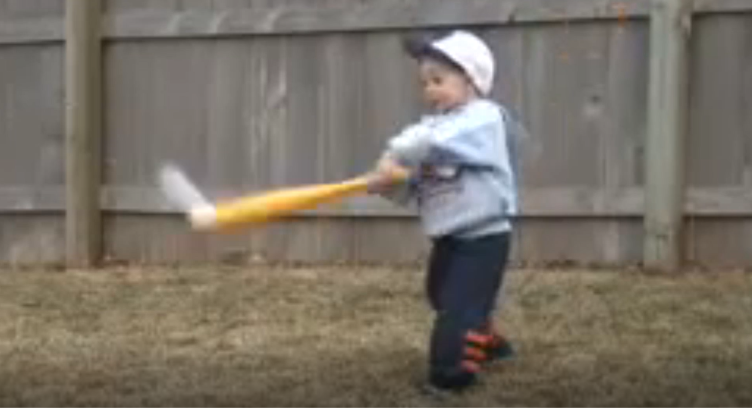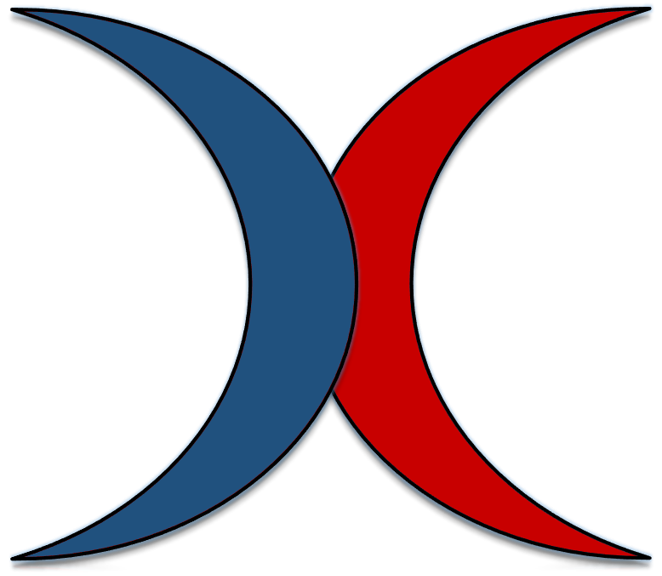
The Role of Subconscious Motor Solutions in Hitting a Baseball
By Ken Cherryhomes
Hitting a baseball is a challenging task that requires accurate timing and precise movements. However, it is interesting to note that young children, particularly toddlers, are able to swing and hit balls with perfect angles without being taught. This is because their movements are guided by their subconscious, allowing for natural and efficient motor solutions.
As we get older and begin to be taught specific mechanics and techniques for hitting a ball, we often become fixated on the details of these movements and can disrupt our natural, efficient motor solutions. This can be particularly problematic in hitting a baseball, where the primary challenge is in accurately timing the swing to intercept the ball, using tau and tau-dot calculations.
* For More on Tau and Tau-Dot calculations, see my article ‘ Baseball Swing Accuracy: Tau, Tau-Dot and Online Control Explained’.
Unfortunately, this fixation on mechanics can lead to further complications, as the brain is forced to consciously control movements instead of relying on the subconscious. This can result in a less effective swing, and an added time delay, potentially decreasing the chance of successfully hitting the ball.
It is important to strike a balance between conscious control and natural movement in order to achieve the most effective and efficient motor solutions. By understanding the role of subconscious motor solutions in hitting a baseball, we can work towards finding this balance and improving our performance on the field.
it is important to consider the potential disconnect between a batter’s natural motor plan and any new mechanical solutions that are taught. While it is possible for a new mechanical solution to become automatic through repetition, it may not be the most efficient or effective solution. This is because the new solution may be based on conscious control and the use of external cues, whereas the natural motor plan was guided by the subconscious and internal cues. As a result, the new solution may not be as accurate or efficient as the original plan, which was developed unconsciously.
It is important for batters to understand this and to strive for a balance between conscious control and natural movement in order to achieve the most effective and efficient motor solutions.
The batter’s natural motor plan for hitting a baseball is derived and executed perfectly, guided by the subconscious and internal cues.
In some cases, a batter’s natural plan may be mistaken for an imperfect swing, when in fact the issue lies with timing rather than mechanics, which is an entirely different discussion.
Decision-making factors, such as environmental factors like wind, lighting, and playing surface, subconsciously accounted for and adjusted through online control, are not necessarily related to the mechanical swing that a batter naturally develops and later confirms as effective through practice.
Misguided training can lead to an alteration of the natural mechanical swing, resulting in imperfect swings. It is important for coaches and players to understand the importance of a natural and efficient swing, and to avoid overemphasizing specific mechanics that may not be the best fit for an individual player. As evidenced by the 2-year-old batter, the subconscious will provide a perfect motor solution if left alone. Even matching swing attack angle swing plane with pitch plane is executed perfectly, something so complex it would be impossible to explain to a 2-year-old.
Here, the toddler has chosen an attack angle that matches the plane of the incoming pitch that also fits his intention of lifting the ball without looping his swing path. This is the most logical, direct path to fulfill his intention, subconsciously derived.
To understand the complexity of the task, we must breakdown the predictive calculations leading up to the bat/ball intersection. In the case of the 2-year-old, the pitch is delivered and is arcing through multiple planes (the pitch is not flat) and the pitch is in a constant state of deceleration, all while his swing is accelerating. The toddler’s initial velocity prediction is adjusted, right up until the decision to release his swing. Furthermore, he is also calculating how long his swing takes to arrive at a desired collision point at the same time the ball arrives.
When a toddler who swings perfectly is later introduced to high velocity pitching, their main challenge becomes timing the swing to intercept the ball. However, their natural motor plan and intent to maximize their results would allow them to adapt and optimize their movement to suit the situation, without the need for explicit instruction.
This is because their movements are guided by their subconscious, allowing for natural and efficient motor solutions that are not hindered by conscious control or external cues. In other words, the toddler’s natural motor plan would enable them to adjust their swing to match the speed and trajectory of the incoming ball, without the need for explicit instruction.
However, as we get older and are taught specific mechanics and techniques for hitting a ball, we often become fixated on the details of these movements that can disrupt our natural, efficient motor solutions. The result can be a less effective swing, as the brain is forced to consciously control each aspect of the movement instead of relying on the subconscious.
Please send questions and comments to:
